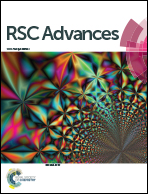Morphology, mechanical and dielectric properties, and rheological behavior of EAGMA toughened microcellular PEI–EAGMA foam
Abstract
A series of toughened polyetherimide (PEI)–ethylene-acrylate-glycidyl methacrylate (EAGMA) copolymer blends were prepared using a twin screw extruder and then injection molded by conventional and microcellular methods. The effect of the EAGMA content on the mechanical, thermal and dielectric properties, rheological behavior and morphology of the PEI–EAGMA blends was investigated. The results showed that the PEI–EAGMA blends exhibited a notched Charpy impact strength of 27.9 kJ m−2. This is 4–5 times higher than that of pure PEI and indicates that EAGMA had an excellent toughening effect on the PEI–EAGMA system. The interfacial tension calculation and SEM micrographs indicated that the PEI matrix was highly compatible with the EAGMA elastomer. The rheological results showed the restriction in the molecular mobility of PEI was more significant as the content of EAGMA increased. Moreover, the dielectric constant and loss of the materials can be effectively reduced through the technology of micro-foaming. EAGMA plays an important role in the microcellular structure formation and final dielectric properties of the PEI–EAGMA foam.


 Please wait while we load your content...
Please wait while we load your content...